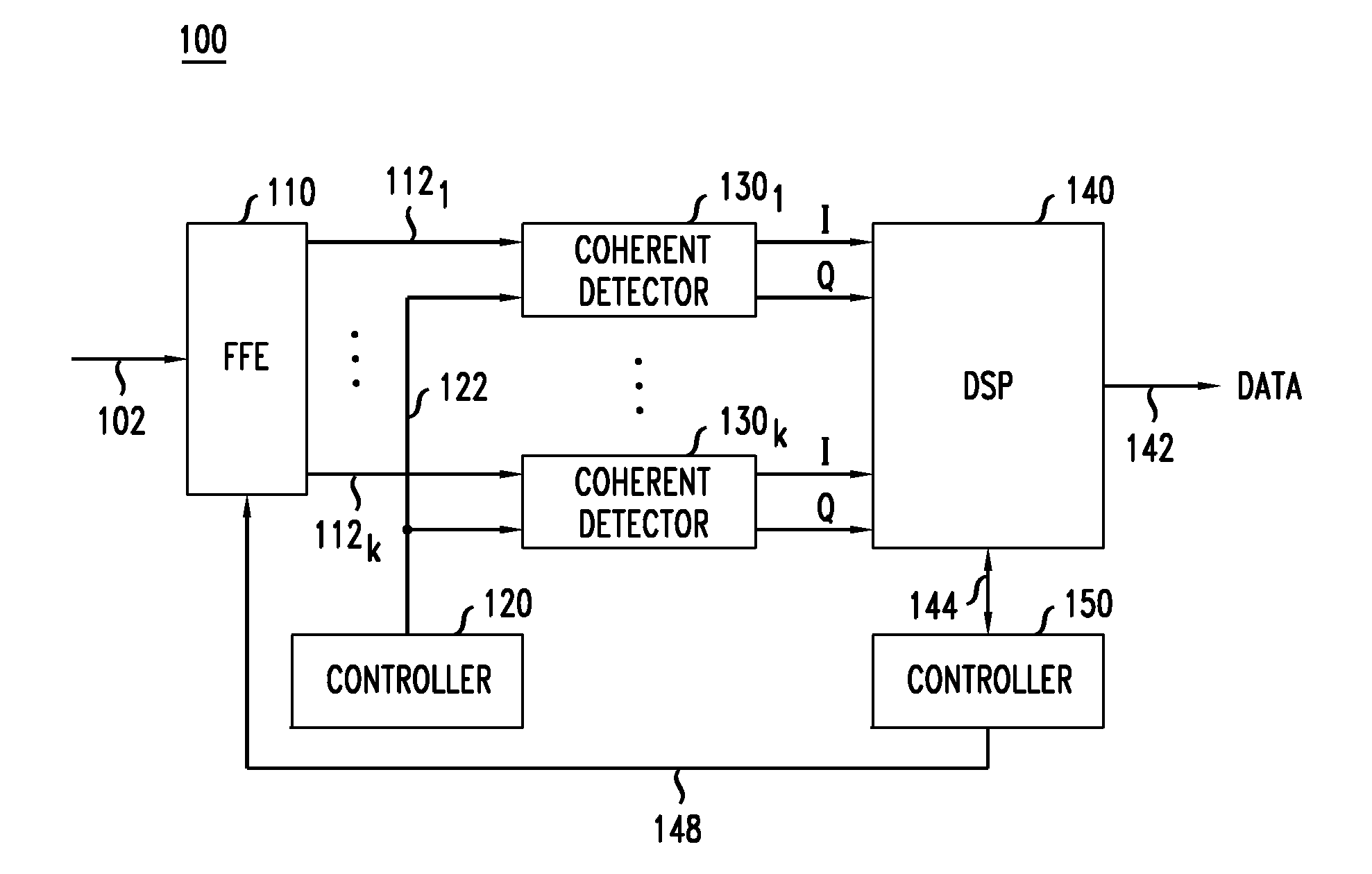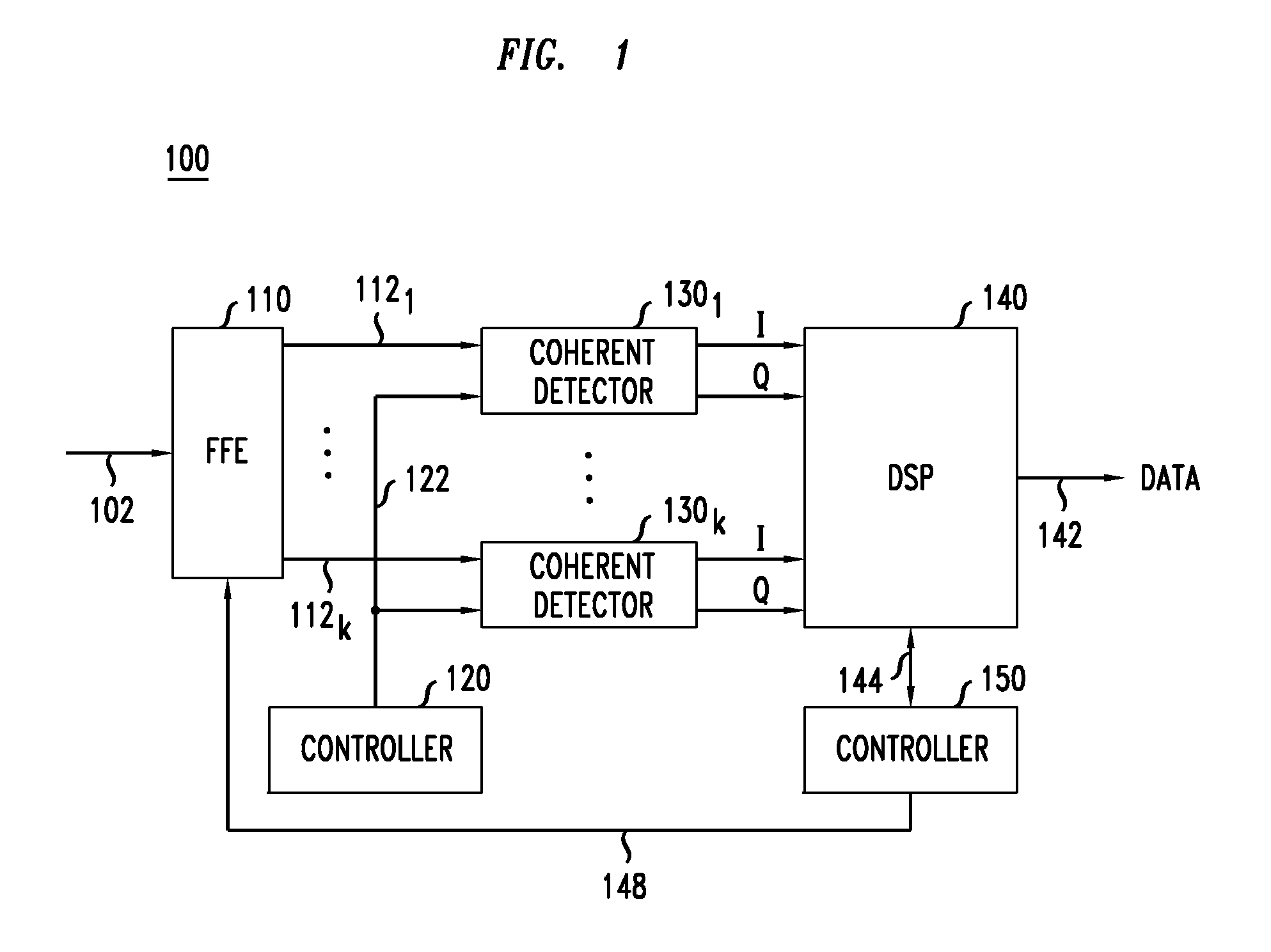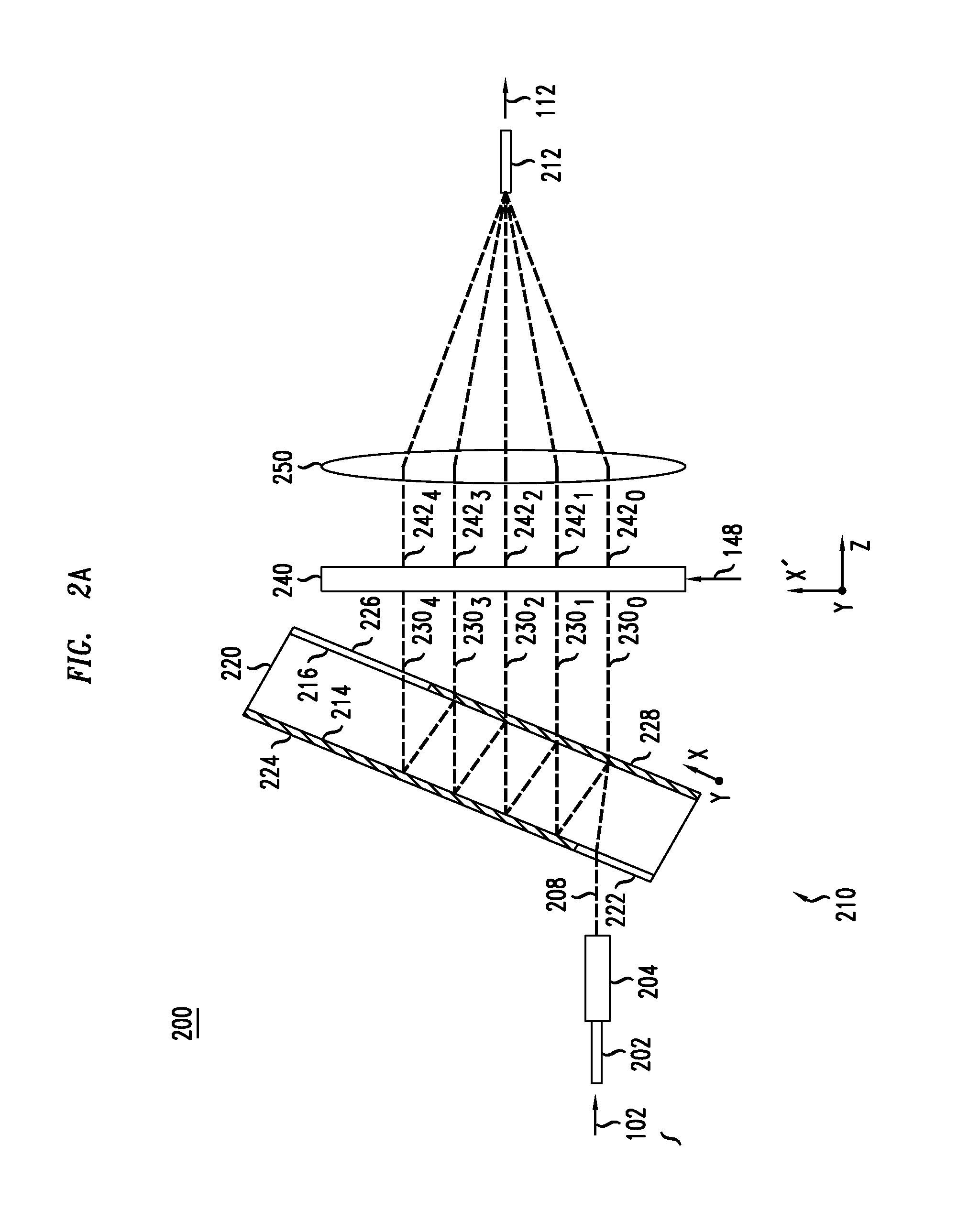Optical feed-forward equalizer for MIMO signal processing
a technology of mimo signal processing and equalizer, applied in the field of optical communication equipment, can solve the problems of affecting the transmission performance of optical transport links, requiring relatively high power to operate, and being relatively expensive to design and/or fabricate, so as to reduce the signal processing load and/or signal processing requirements
- Summary
- Abstract
- Description
- Claims
- Application Information
AI Technical Summary
Benefits of technology
Problems solved by technology
Method used
Image
Examples
Embodiment Construction
[0008]At least some of the above-indicated problems are addressed by various embodiments of an optical feed-forward equalizer disclosed herein. In one embodiment, the optical feed-forward equalizer is part of the host optical receiver that enables the latter to perform at least some of the desired signal processing in the optical domain, e.g., prior to coherently detecting and digitizing the received optical signal(s). The optical signal processing implemented in the optical feed-forward equalizer can be used, e.g., to at least partially compensate the adverse effects of chromatic dispersion, polarization-mode dispersion, and / or spatial-mode mixing / crosstalk imposed on the received optical signal(s) by the optical transport link. This reduces the signal-processing load of and / or the signal-processing requirements to the receiver's electrical DSP.
[0009]According to one embodiment, provided is an apparatus comprising an optical feed-forward equalizer configured to be coupled between a...
PUM
 Login to View More
Login to View More Abstract
Description
Claims
Application Information
 Login to View More
Login to View More - R&D
- Intellectual Property
- Life Sciences
- Materials
- Tech Scout
- Unparalleled Data Quality
- Higher Quality Content
- 60% Fewer Hallucinations
Browse by: Latest US Patents, China's latest patents, Technical Efficacy Thesaurus, Application Domain, Technology Topic, Popular Technical Reports.
© 2025 PatSnap. All rights reserved.Legal|Privacy policy|Modern Slavery Act Transparency Statement|Sitemap|About US| Contact US: help@patsnap.com



